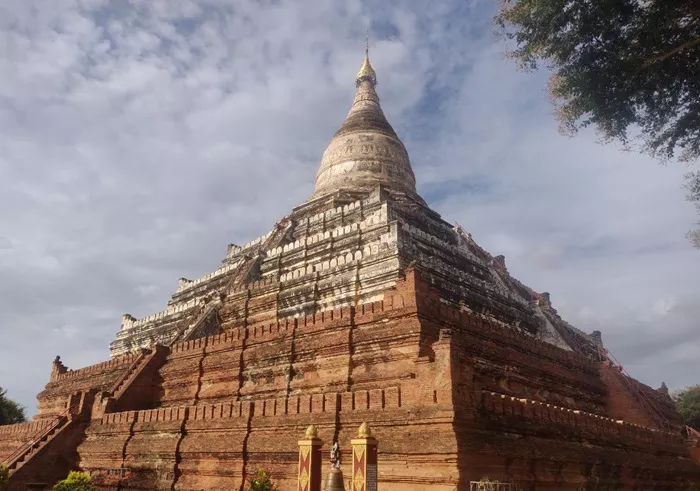Myanmar, also known as Burma, is a country deeply rooted in Theravada Buddhism. Its landscape is adorned with thousands of temples and pagodas, reflecting centuries of devotion and artistry. These sacred sites are not only places of worship but also symbols of Myanmar’s rich cultural heritage.
The Significance of Temples in Myanmar
Temples in Myanmar serve multiple purposes:
Spiritual Centers: They are places where Buddhists come to meditate, pray, and seek enlightenment.
Cultural Landmarks: Many temples are historical sites that showcase the country’s architectural evolution.
Community Hubs: Temples often host festivals and gatherings, strengthening community bonds.
Theravada Buddhism in Myanmar
Theravada Buddhism emphasizes the teachings of the Buddha as preserved in the Pali Canon. In Myanmar, this tradition influences daily life, from monastic practices to layperson rituals. Temples play a central role in facilitating these practices.
Famous Buddhist Temples in Myanmar
Myanmar is home to numerous renowned temples. Here are some notable ones:
Shwedagon Pagoda
Located in Yangon, the Shwedagon Pagoda is considered the most sacred Buddhist pagoda in Myanmar. Believed to enshrine relics of four previous Buddhas, including eight strands of Gautama Buddha’s hair, it stands as a testament to the country’s deep spiritual roots. The pagoda’s golden stupa dominates the city’s skyline, making it a prominent landmark.
Kuthodaw Pagoda
Situated in Mandalay, the Kuthodaw Pagoda is renowned for housing the world’s largest book. This “book” comprises 729 marble slabs inscribed with the entire Pali Canon of Theravada Buddhism. Each slab is housed in its own small stupa, collectively forming a vast and sacred library.
Ananda Temple
In the ancient city of Bagan, the Ananda Temple stands out for its architectural beauty and spiritual significance. Built in 1105 AD during the reign of King Kyansittha, it features a cruciform layout with terraces leading to a small pagoda at the top. The temple houses four standing Buddha statues, each facing a cardinal direction.
Thatbyinnyu Temple
Also located in Bagan, the Thatbyinnyu Temple is the tallest temple in the area. Completed in 1150/51, it exemplifies the innovative architectural and artistic creativity of the Bagan period. Despite damage from earthquakes, restoration efforts are ongoing to preserve this UNESCO World Heritage Site.
Kyaiktiyo Pagoda (Golden Rock)
Perched atop a granite boulder covered with gold leaves, the Kyaiktiyo Pagoda in Mon State is a major pilgrimage site. According to legend, the boulder balances on a strand of the Buddha’s hair, defying gravity. The site attracts devotees who come to pay homage and paste gold leaves onto the rock.
Temple Architecture in Myanmar
Myanmar’s temple architecture reflects a blend of indigenous styles and influences from neighboring regions.
Stupas and Pagodas
Stupas, or pagodas, are dome-shaped structures that often house relics. They are characterized by their solid construction and spire-like tops. The Shwedagon Pagoda is a prime example, with its gilded exterior and towering presence.
Monasteries and Temples
Monasteries, known as “kyaung,” serve as residences for monks and centers for learning. Temples, on the other hand, are places of worship and house images of the Buddha. The Ananda Temple combines both functions, serving as a place for meditation and housing significant Buddhist art.
Influence of Buddhist Architecture
Myanmar’s temples showcase the evolution of Buddhist architecture. From the early Bagan period’s solid brick structures to the intricate wood carvings of later periods, the architectural styles reflect the country’s historical and cultural shifts.
Role of Temples in Daily Life
Temples are integral to the daily lives of Myanmar’s people.
Religious Practices
Devotees visit temples to offer alms, light incense, and meditate. Monks conduct sermons and lead rituals, guiding laypeople in their spiritual journeys.
Festivals and Celebrations
Temples are central to festivals like Thingyan (Water Festival) and Thadingyut (Festival of Lights). These events involve communal activities, traditional performances, and religious ceremonies.
Education and Community Services
Many temples run schools and provide shelter for the needy. They play a vital role in community development and social welfare.
Preservation and Challenges
While temples are revered, they face challenges that threaten their preservation.
Natural Disasters
Earthquakes have damaged many temples, especially in Bagan. Restoration efforts are ongoing, but the risk remains.
Tourism Impact
Increased tourism brings both benefits and challenges. While it boosts the economy, it also leads to wear and tear on ancient structures.
Conservation Efforts
Organizations and local communities are working together to preserve these sacred sites. Efforts include structural reinforcements, controlled tourism, and educational campaigns.
Conclusion
Temples in Myanmar are more than architectural marvels; they are living embodiments of the country’s spiritual and cultural identity. Preserving them ensures that future generations can continue to find inspiration and solace in these sacred spaces.

